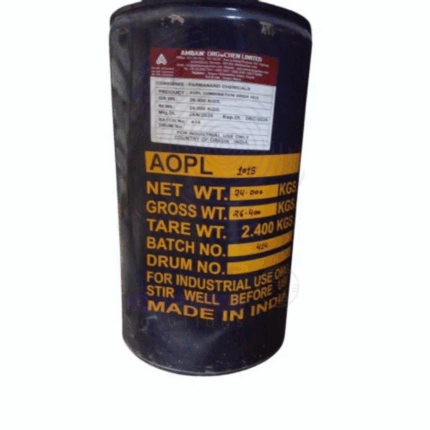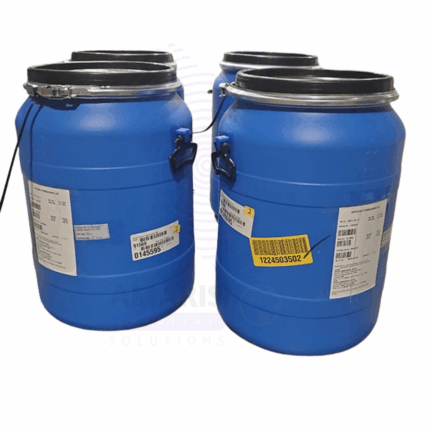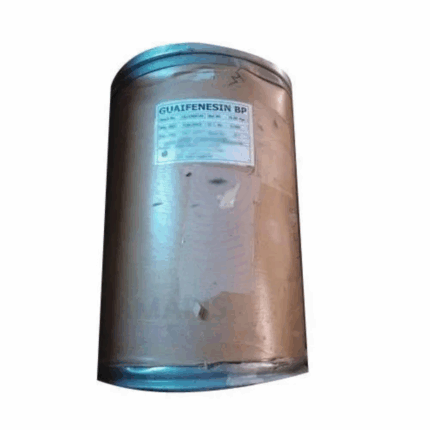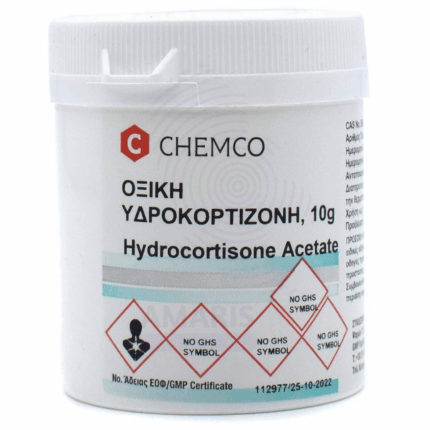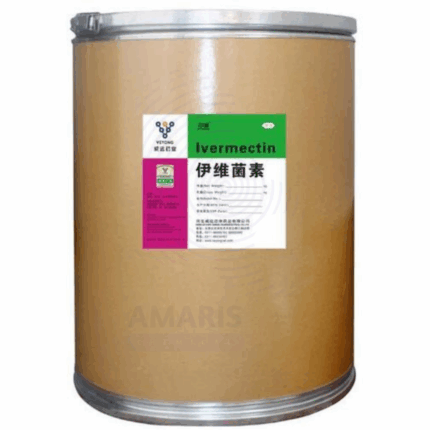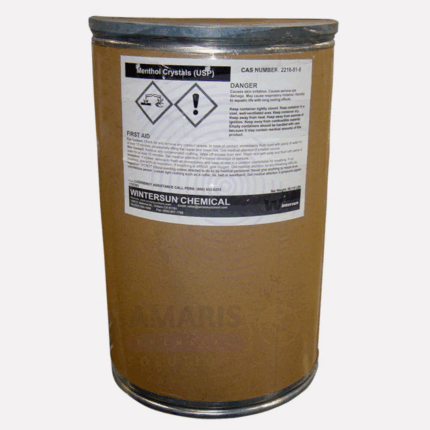Betamethasone 17 Valerate BP
Whatsapp Order
Betamethasone 17 Valerate BP is a potent synthetic corticosteroid ester used primarily for its anti-inflammatory, antipruritic, and vasoconstrictive properties. It is commonly applied topically to treat a variety of skin conditions such as eczema, psoriasis, dermatitis, and allergic reactions. The valerate ester enhances the lipophilicity and skin penetration of betamethasone, improving its therapeutic efficacy. It is recognized in the British Pharmacopoeia (BP) for pharmaceutical standards and quality.
Description
Table of Contents
Toggle
Primary Uses
Pharmaceutical & Dermatological Uses
- Used topically to treat inflammatory skin conditions including eczema, psoriasis, and contact dermatitis.
- Alleviates symptoms such as redness, itching, swelling, and discomfort caused by allergic reactions and insect bites.
- Employed in corticosteroid formulations like creams, ointments, lotions, and gels for localized anti-inflammatory effect.
- Often used as a second-line treatment for moderate to severe dermatological disorders where mild corticosteroids are ineffective.
Veterinary Medicine
- Used in veterinary topical treatments for inflammatory skin conditions in animals under veterinary supervision.
Secondary Uses
- Occasionally included in combination pharmaceutical products with antifungal or antibacterial agents for treating mixed infections with inflammatory symptoms.
- Used in clinical research for studying corticosteroid effects and delivery systems in dermatology.
PRODUCT KEY FEATURES
- Basic Identification Attributes
- Chemical Name (IUPAC): (8S,9R,10S,11S,13S,14S,16S,17R)-9-Fluoro-11,17-dihydroxy-16-methyl-3,20-dioxopregna-1,4-dien-21-yl pentanoate
- Common/Trade Names: Betamethasone 17 Valerate, Betamethasone valerate, BMV
- CAS Number: 2152-44-5
- HS Code: 2937.29.00
- Molecular Formula: C27H37FO6
- Synonyms: Betamethasone valerate, Betamethasone 17-valerate, 17-Valerate ester of betamethasone
- Physical & Chemical Properties
- Physical State: White to off-white crystalline powder
- Color & Odor: White or creamy, odorless or faint odor
- Melting Point: 118–121°C
- Solubility: Slightly soluble in water, soluble in alcohol, chloroform, and acetone
- Stability: Stable under recommended storage; sensitive to light and moisture
- Safety & Hazard Attributes
- Hazard Class (GHS): Not classified as hazardous but may cause skin irritation or sensitization
- NFPA Ratings: Health 2, Flammability 1, Reactivity 0
- Exposure Limits: No specific occupational exposure limits established
- Toxicity: Low systemic toxicity when used topically as directed; prolonged use may cause steroid-related side effects
- Storage & Handling Attributes
- Storage Conditions: Store in a cool, dry place, protected from light and moisture
- Container Type: Airtight containers, usually amber glass or plastic tubes for formulations
- Shelf Life: 2–3 years under proper conditions
- Special Handling: Avoid exposure to heat, light, and moisture; use PPE to avoid direct skin contact with pure powder
- Regulatory & Compliance Attributes
- BP (British Pharmacopoeia): Officially recognized and monographed
- FDA/EMA: Approved in many countries for topical corticosteroid formulations
- Transportation: Not classified as hazardous
- Waste Disposal: Dispose as pharmaceutical waste according to local regulations
- Environmental & Health Impact
- Ecotoxicity: Low environmental hazard when used properly
- Persistence: Degrades in the environment, but prolonged exposure should be minimized
- Carcinogenicity: Not classified as carcinogenic
- Biodegradability: Moderately biodegradable
SAFETY HANDLING PRECAUTIONS
Safety Handling Precautions
- PPE: Wear gloves, protective clothing, and eye protection when handling the pure chemical.
- Avoid: Prolonged skin contact and inhalation of dust.
- Ventilation: Work in well-ventilated areas.
- Hygiene: Wash hands thoroughly after handling.
First Aid Measures
- Inhalation: Move to fresh air; seek medical attention if symptoms persist.
- Skin Contact: Wash thoroughly with soap and water; discontinue use if irritation occurs.
- Eye Contact: Rinse with plenty of water for 15 minutes; seek medical attention if irritation persists.
- Ingestion: Rinse mouth and seek medical advice.
Firefighting Measures
- Fire Hazards: Combustible solid; may burn but not easily ignited.
- Extinguishing Media: Use water spray, foam, dry chemical, or CO₂ extinguishers.
Special Precautions: Firefighters should wear protective equipment and self-contained breathing apparatus.
Related products
Cetirizine Dihydrochloride
Cetirizine Dihydrochloride is a second-generation antihistamine widely used to relieve allergy symptoms such as hay fever, urticaria (hives), and other allergic conditions. It is the dihydrochloride salt form of cetirizine, presenting as a white to off-white crystalline powder that is odorless or nearly odorless and slightly bitter in taste. Cetirizine Dihydrochloride acts as a selective antagonist of peripheral H1 histamine receptors, preventing the effects of histamine and thereby reducing allergic symptoms without causing significant sedation. It is a commonly prescribed active pharmaceutical ingredient (API) in oral tablets, syrups, and capsules.
Ellagic Acid
Ellagic Acid is a naturally occurring polyphenolic compound found in numerous fruits, nuts, and vegetables such as pomegranates, strawberries, raspberries, walnuts, and cranberries. It is a potent antioxidant known for its ability to scavenge free radicals and chelate metal ions. Due to its significant anti-inflammatory, anti-carcinogenic, and anti-viral properties, Ellagic Acid has gained extensive interest in pharmaceutical, nutraceutical, cosmetic, and food industries. It appears as a yellow to light brown crystalline powder, insoluble in water but soluble in organic solvents like ethanol and DMSO.
Guaiphenesin BP
Guaiphenesin BP is a white crystalline powder or granules with a faint characteristic odor, classified as an expectorant used primarily in pharmaceutical formulations to relieve chest congestion. It works by loosening and thinning mucus in the airways, making it easier to cough up and clear from the respiratory tract. It is widely utilized in cough syrups, tablets, and cold remedies. Recognized for its mucolytic and muscle-relaxant properties, Guaiphenesin is included in both prescription and over-the-counter medications worldwide.
Hydrocortisone Acetate
Hydrocortisone Acetate is a synthetic corticosteroid ester derived from hydrocortisone (cortisol). It is a white to off-white crystalline powder, practically insoluble in water but soluble in alcohol and acetone. This compound exhibits potent anti-inflammatory, immunosuppressive, and anti-allergic properties, making it widely used in pharmaceutical and dermatological formulations. Hydrocortisone Acetate acts by modulating gene expression to reduce the production of inflammatory mediators, thereby alleviating symptoms in various inflammatory and autoimmune conditions.
Hydrocortisone Base BP Micro
Hydrocortisone Base BP Micro is a highly purified, micronized form of hydrocortisone base compliant with British Pharmacopoeia (BP) standards. It is a white to off-white fine powder designed for enhanced solubility and bioavailability in pharmaceutical formulations. As a corticosteroid hormone analog, it exhibits potent anti-inflammatory, immunosuppressive, and anti-allergic activities. The micronized particle size (~93 microns) facilitates improved dispersion in topical, injectable, and oral dosage forms.
Ivermectin BP Vet
Ivermectin BP Vet is a potent, broad-spectrum antiparasitic agent widely used in veterinary medicine. It belongs to the avermectin family and works by disrupting nerve and muscle function in parasites, leading to paralysis and death. Ivermectin is highly effective against a range of internal and external parasites, including gastrointestinal worms, lungworms, mites, lice, and certain ticks. Available in oral, injectable, and topical forms, it is trusted for use in livestock, poultry, and companion animals. Its reliable efficacy, wide safety margin, and ease of administration make it an essential treatment in animal health and parasite control programs.
Menthol crystals
Menthol Crystals are natural organic compounds derived from peppermint or other mint oils, presenting as clear or white crystalline solids with a strong, cooling mint aroma. They possess analgesic, antiseptic, and flavoring properties. Widely used in pharmaceuticals, cosmetics, food, and personal care products, menthol crystals provide a refreshing cooling sensation and fragrance, enhancing product efficacy and consumer appeal.
Piperazine Citrate BP
Piperazine Citrate BP is a pharmaceutical-grade anthelmintic compound used primarily for the treatment of intestinal worm infections, especially ascariasis (roundworms) and enterobiasis (pinworms). It works by paralyzing the worms, allowing them to be expelled naturally from the body through bowel movements. Piperazine Citrate is included in the British Pharmacopoeia (BP) and is known for its safety, efficacy, and wide use in both human and veterinary medicine.


 Preservatives(food)
Preservatives(food) Flavor Enhancers
Flavor Enhancers Acidulants
Acidulants Sweeteners
Sweeteners Antioxidants
Antioxidants Colorants(food)
Colorants(food) Nutraceutical Ingredients (food)
Nutraceutical Ingredients (food) Nutrient Supplements
Nutrient Supplements Emulsifiers
Emulsifiers
 Collectors
Collectors Dust Suppressants
Dust Suppressants Explosives and Blasting Agents
Explosives and Blasting Agents Flocculants and Coagulants
Flocculants and Coagulants Frothers
Frothers Leaching Agents
Leaching Agents pH Modifiers
pH Modifiers Precious Metal Extraction Agents
Precious Metal Extraction Agents
 Antioxidants(plastic)
Antioxidants(plastic) Colorants (Pigments, Dyes)
Colorants (Pigments, Dyes) Fillers and Reinforcements
Fillers and Reinforcements Flame Retardants
Flame Retardants Monomers
Monomers Plasticizers
Plasticizers Polymerization Initiators
Polymerization Initiators Stabilizers (UV, Heat)
Stabilizers (UV, Heat)
 Antifoaming Agents
Antifoaming Agents Chelating Agents
Chelating Agents Coagulants and Flocculants
Coagulants and Flocculants Corrosion Inhibitors
Corrosion Inhibitors Disinfectants and Biocides
Disinfectants and Biocides Oxidizing Agents
Oxidizing Agents pH Adjusters
pH Adjusters Scale Inhibitors( water)
Scale Inhibitors( water)
 Antioxidants(cosmetic)
Antioxidants(cosmetic) Emollients
Emollients Fragrances and Essential Oils
Fragrances and Essential Oils Humectants
Humectants Preservatives
Preservatives Surfactants(cosmetic)
Surfactants(cosmetic) Thickeners
Thickeners UV Filters
UV Filters
 Fertilizers
Fertilizers Soil Conditioners
Soil Conditioners Plant Growth Regulators
Plant Growth Regulators Animal Feed Additives
Animal Feed Additives Biostimulants
Biostimulants Pesticides (Herbicides, Insecticides, Fungicides)
Pesticides (Herbicides, Insecticides, Fungicides)
 Active Pharmaceutical Ingredients (APIs)
Active Pharmaceutical Ingredients (APIs) Excipients
Excipients Solvents(pharmaceutical)
Solvents(pharmaceutical) Antibiotics
Antibiotics Antiseptics and Disinfectants
Antiseptics and Disinfectants Vaccine Adjuvants
Vaccine Adjuvants Nutraceutical Ingredients (pharmaceutical)
Nutraceutical Ingredients (pharmaceutical) Analgesics & Antipyretics
Analgesics & Antipyretics
 Analytical Reagents
Analytical Reagents Solvents(lab)
Solvents(lab) Chromatography Chemicals
Chromatography Chemicals Spectroscopy Reagents
Spectroscopy Reagents microbiology-and-cell-culture-reagents
microbiology-and-cell-culture-reagents Molecular Biology Reagents
Molecular Biology Reagents Biochemical Reagents
Biochemical Reagents Inorganic and Organic Standards
Inorganic and Organic Standards Laboratory Safety Chemicals
Laboratory Safety Chemicals Specialty Laboratory Chemicals(Special Laboratory Equipment)
Specialty Laboratory Chemicals(Special Laboratory Equipment)
 Demulsifiers
Demulsifiers Hydraulic Fracturing Fluids
Hydraulic Fracturing Fluids Scale Inhibitors(oil)
Scale Inhibitors(oil) Surfactants(oil)
Surfactants(oil) Drilling Fluids
Drilling Fluids
 Dyes and Pigments
Dyes and Pigments Bleaching Agents
Bleaching Agents Softening Agents
Softening Agents Finishing Agents
Finishing Agents Antistatic Agents
Antistatic Agents
 Admixtures
Admixtures Waterproofing Agents
Waterproofing Agents Sealants and Adhesives
Sealants and Adhesives Curing Compounds
Curing Compounds Concrete Repair Chemicals
Concrete Repair Chemicals Anti-Corrosion Coatings
Anti-Corrosion Coatings
 Surfactants(cleaning)
Surfactants(cleaning) Builders
Builders Enzymes
Enzymes Solvents (Cleaning)
Solvents (Cleaning) Fragrances
Fragrances
 Electronic Chemicals
Electronic Chemicals Catalysts
Catalysts Lubricants
Lubricants Photographic Chemicals
Photographic Chemicals Refrigerants
Refrigerants Automotive chemicals
Automotive chemicals Pyrotechnic Chemicals
Pyrotechnic Chemicals
 Biodegradable Surfactants
Biodegradable Surfactants Bio-based Solvents
Bio-based Solvents Renewable Polymers
Renewable Polymers Carbon Capture Chemicals
Carbon Capture Chemicals Wastewater Treatment Chemicals
Wastewater Treatment Chemicals
 Pigments
Pigments Solvents(paint)
Solvents(paint) Specialty Coatings
Specialty Coatings Binders/Resins
Binders/Resins Additives
Additives Driers
Driers Anti-Corrosion Agents
Anti-Corrosion Agents Functional Coatings
Functional Coatings Application-Specific Coatings
Application-Specific Coatings
 Fresh Herbs
Fresh Herbs Ground Spices
Ground Spices Whole Spices
Whole Spices Spice Blends
Spice Blends Dried Herbs
Dried Herbs
 Leavening Agents
Leavening Agents Dough Conditioners
Dough Conditioners Flour Treatments
Flour Treatments Fat Replacers
Fat Replacers Decoratives
Decoratives Preservatives(baking)
Preservatives(baking)
 Plasticizers & Softeners
Plasticizers & Softeners Reinforcing Agents
Reinforcing Agents Adhesion Promoters
Adhesion Promoters Vulcanizing Agents
Vulcanizing Agents Antidegradants
Antidegradants Blowing Agents
Blowing Agents Fillers & Extenders
Fillers & Extenders Accelerators & Retarders
Accelerators & Retarders
